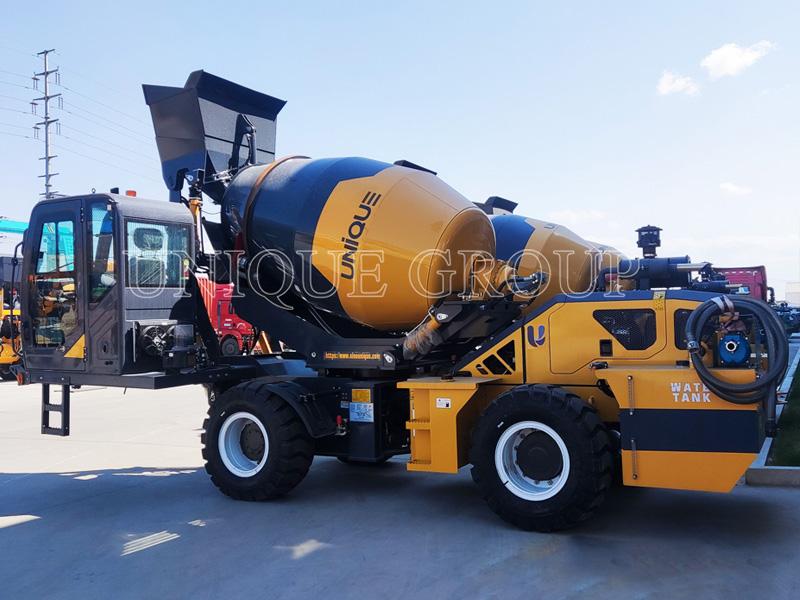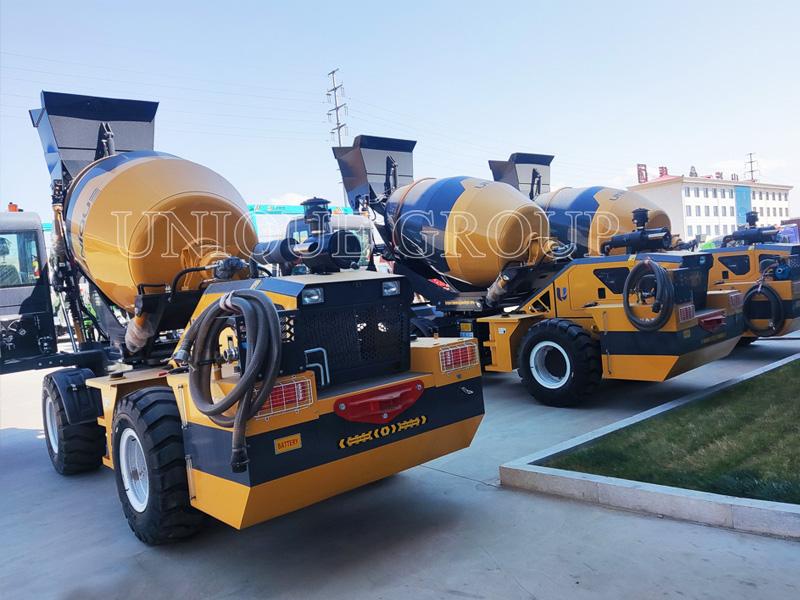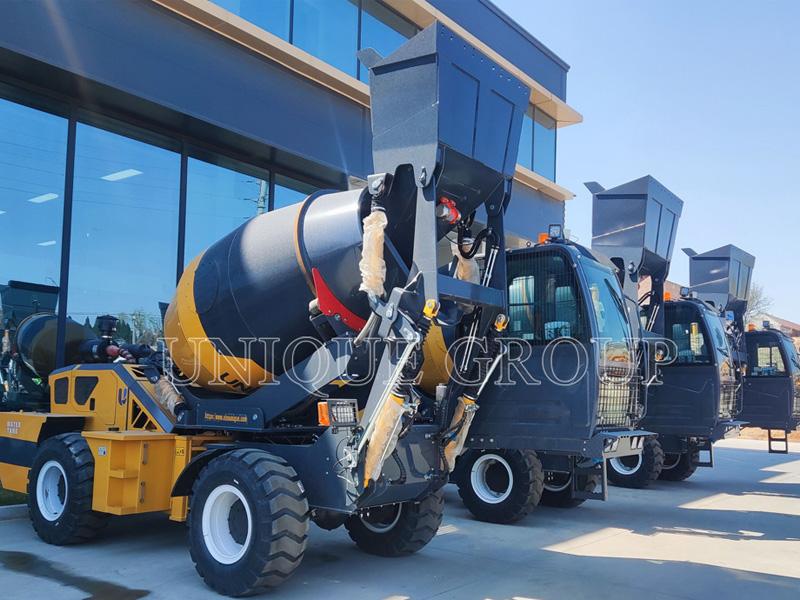The Versatile Solution for Modern Construction: Self-Loading Concrete Mixer Trucks

In the dynamic landscape of construction, efficiency and adaptability are paramount. Self-loading concrete mixer trucks are revolutionizing the industry by integrating the entire concrete production process into a single, mobile unit. These innovative vehicles offer unmatched versatility, cost savings, and environmental benefits, making them an essential tool for projects of all sizes.
Key Components and Their Functions
Self-loading concrete mixer trucks are equipped with a range of specialized components that streamline the concrete production process:
- Self-Loading System: The truck features a built-in hopper and conveyor belt, enabling it to scoop raw materials (sand, gravel, and cement) directly from storage piles. Water is added via an onboard tank, often with automated controls for precise measurement.
- Mixing Drum: A rotating drum on the chassis ensures homogeneous mixing of materials, allowing for consistent concrete quality. This feature is particularly valuable for on-site adjustments to slump and strength requirements.
- Transport and Delivery Mechanism: Once mixed, the concrete is discharged directly from the drum through a chute, facilitating seamless pouring at the construction site.
How It Works
The operational process of a self-loading concrete mixer truck is straightforward and efficient:
- Loading Materials: The truck drives to material piles, and the operator uses the hopper to scoop the necessary ingredients. Water is added from the onboard tank.
- Mixing: The drum rotates for 5–10 minutes to create a homogeneous concrete mix. This on-site mixing ensures the concrete remains fresh and reduces waste.
- Transport and Dispensing: The truck delivers the concrete directly to the construction site and discharges it precisely where needed, such as for foundations, walls, or floors.
Advantages Over Traditional Mixer Trucks
Compared to traditional mixer trucks, self-loading models offer several key advantages:
- Reduced Infrastructure Dependency: Self-loading trucks eliminate the need for batching plants or external loaders, making them ideal for remote or off-grid construction sites.
- Cost Efficiency: By reducing labor requirements and eliminating transportation fees for pre-mixed concrete, these trucks significantly lower operational costs.
- Enhanced Flexibility: Their compact size and ability to perform all tasks in one unit make them perfect for small-scale projects or sites with limited space.
- Waste Reduction: Mixing only the required quantity of concrete minimizes leftover material and associated disposal costs.
Applications
The versatility of self-loading concrete mixer trucks makes them suitable for a wide range of projects:
- Residential Construction: Foundations, driveways, and small-scale buildings benefit from the truck’s ability to deliver precise amounts of concrete.
- Rural or Remote Projects: Areas without access to concrete batching plants can rely on these trucks for on-site mixing.
- Road and Bridge Construction: They are invaluable for on-site repairs or remote segments of infrastructure projects.
- Small-Scale Infrastructure: Applications include drainage systems, sidewalks, and agricultural structures.
Considerations for Use
While self-loading concrete mixer trucks offer numerous benefits, there are a few considerations to keep in mind:
- Operator Training: Skilled operators are required to manage material proportions and ensure consistent mixing quality.
- Maintenance: Regular upkeep of the drum, conveyor, and hydraulic systems is crucial to maintain performance and longevity.
- Capacity Limitations: With typical mixing capacities ranging from 2–8 cubic meters, these trucks may not be suitable for large-scale projects that require higher volumes of concrete.
Technological Innovations
Modern self-loading concrete mixer trucks incorporate advanced features to enhance performance and sustainability:
- Automated Batching Systems: Digital controls ensure accurate material measurement, reducing waste and improving consistency.
- Eco-Friendly Features: Fuel-efficient engines or electric/hydrogen-powered models are available, reducing emissions and environmental impact.
- Telematics: Remote monitoring of mixing parameters and fleet management improve efficiency and reduce downtime.
Conclusion
In summary, self-loading concrete mixer trucks offer a compelling solution for construction projects that prioritize efficiency, adaptability, and cost savings. By integrating the entire concrete production process into a single vehicle, these trucks are redefining the way we approach construction, from small residential projects to large-scale infrastructure developments. As technology continues to advance, these vehicles are likely to become an even more integral part of the construction industry, driving innovation and sustainability forward.
- Information Technology
- Office Equipment and Supplies
- Cars and Trucks
- Persons
- Books and Authors
- Tutorials
- Art
- Causes
- Crafts
- Dance
- Drinks
- Film
- Fitness
- Food
- Games
- Gardening
- Health
- Home
- Literature
- Music
- Networking
- Other
- Party
- Religion
- Shopping
- Sports
- Theater
- Wellness





